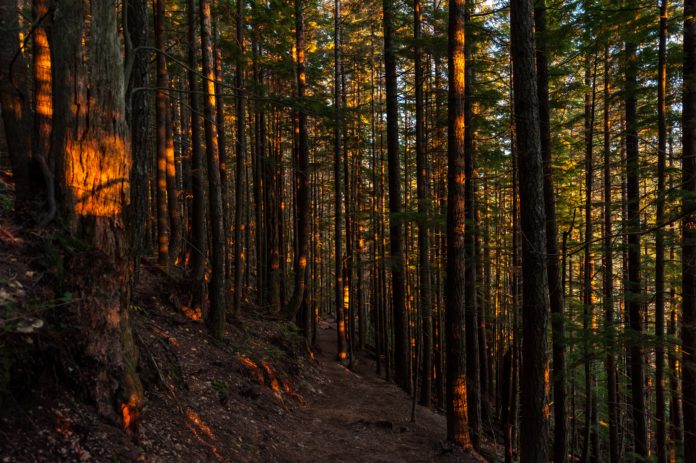Mother Nature’s mysteries are tough, if not impossible, to replicate, no matter how painstakingly agronomists, botanists, foresters, and scientists try to imitate or clone her work.
Take a dying forest, for example. Its detritus, log circumferences, biodegradation, and post-life passengers (i.e., organisms that find fertile habitat in dead trees) often require a hundred or even more years of growth before a particular species find them suitable for survival. Then, these organisms that feed on the dead continue to live for perhaps another hundred years in some cases.
In short, it takes quite a long time to replicate nature’s work by planting new, younger trees or seedlings that ultimately find needy hosts in their afterlives.
Sounds tricky, doesn’t it? However, some forestry practices can indeed provide the best of both worlds. No one knows this better than the teak farmer, entrepreneur, and angel investor with a dedication to philanthropy, Ara Chackerian.
Chackerian’s 1,000-acre Limonapa Teak farm prides itself on producing world-class teak while providing hundreds of jobs for regional communities and fighting climate change by absorbing over 24,000 tons of carbon dioxide from teak tree growth over about 20 years.
Teak is a very enduring wood for furniture, flooring, and similar applications. Ara Chackerian says that forests must also be enduring. Proper, eco-cognizant practices must be adopted to ensure the full life of a forest and its creatures, says the investor in early-stage healthcare companies.
He says eco-cognizance includes an aptitude for the roles a forest plays in the world’s health.
Old but Still Kicking
Old-growth trees, for instance, prove to be vital to a spotted owl or murrelet. However, young, dense populations of trees prove ideal for elk or deer that depend on the newly sprouted buds for food.
Some songbirds need younger forests for nesting habitat because younger trees offer shelter and protection from predators and disease in some cases.
Grouse prefer a little of both worlds for both nesting and foraging.
These rather few examples offer merely a scant idea of the value in recognizing the diverse ecosystems that a well-sustained forest provides.
A Universal Haven and Learning Center
Humans depend on forests for everything from shelter, medicine, food, clean air, water filtration, to flood prevention (including erosion) and aesthetics in general, notes Chackerian.
Time Teaches
Through the past century and beyond, forest agricultural giants, such as Weyerhaeuser, Georgia Pacific, and West Fraser to name a few, found ways to better emulate mother nature and actually provide greater yields in some instances.
Some of the science involved in recreating nature’s habitats comes solely from a century or two of observation. Such is the case with natural forest fires—essentially those caused by lightning, according to a Michigan Wildlife Council article.
The article cites the Kirkland warbler as an example. It flourished in Michigan hundreds of years ago when lightning-caused fires cleared the forest of old growth and allowed the bird’s primary nesting habitat, young jack pine, to sprout. These warblers need the shrubby protection.
When nature proved void of fires in some forests, the jack pine became too old to provide the cover that these songbirds required. Their population consequently plummeted. According to the state’s wildlife council, the introduction of young jack pines, vital conservation measures, and simulated natural (controlled) fires helped to bring these birds back from the threshold of extinction.
Animals and Forests Evolve for Each Other
According to foresters like Chackerian, a stand of trees is not too unlike an animal itself. It must complete certain stages in life to become fully functional. Each lifecycle of a forest lends a hand to nature’s other creatures on their path to full maturity. Some animals leave after nesting, for example, and others enter for foraging on new or aging trees and vegetation, if not on the young prey that depends on said growth.
Ultimately, particular stages of woody growth and debris also benefit humans as alluded earlier in this article.
Greater Technology Helps
As in most industries, forest agriculture greatly benefits from technological advances.
All the way from micro-biology that identifies organisms once unknown to man, to swifter and more accurate sharing of real-time data—illustrating what’s going on in a forest day by day—new technology bears new windows and insights into what makes a forest and its ecosystem healthy.
According to the Center for International Forestry Research (CIFOR), such technology will steer forest managers to better forest management and sustainability.
While prefacing that “there is no silver bullet” to ensuring a forest’s own sustainability, CIFOR maintains that “managers need good resource assessment and decision support systems.”
The important technologies for sustainable forestry, according to CIFOR, include those fostering better communication between stakeholders and allowing “informed decisions, spanning scales from the gene to the ecosystem.”
By strengthening data sharing, better communications and improving species assessment through scientific advancements, technology will help to address the major challenges ahead for the forest industry and its sustainable management, CIFOR says.
“Some of the challenges will include the shift of production from native forest to plantations in areas of comparative advantage,” CIFOR notes in its “Commonwealth Forestry Review.” In other words, climatic and environmental conditions that emulate the natural forest of a particular area can serve to propagate the habitat and product that the natural setting generates.
Meanwhile, more efficient end-product manufacture that results in equal or better quality than that from natural, raw wood will also enhance the future of forest management and its outcomes.
But as CIFOR reminds us, definitions of sustainability will vary in time and space as society’s expectations and aspirations change.
Ara Chackerian agrees. He says part of the sustainability definition will include those who depend upon the forest but don’t necessarily live there. He learned much about sustainable furniture fabrication and tree-farm management through his travels in Nicaragua, where he met Aram Terry, owner of Madera Sostenible (sustainable wood).
The two set a common objective: to develop the Limonapa Teak farm by putting community and environment first.
“Although the economic value in the farm will come from teak harvests many years down the road, we believe that our efforts to hire and train local people will enable smaller farmers to see the benefits of more environmentally conscious farming practices,” Chackerian says.
In this essence, the human factor in sustainable forestry will matter as greatly as human technolo






